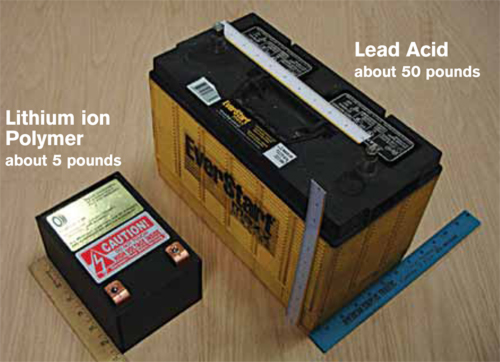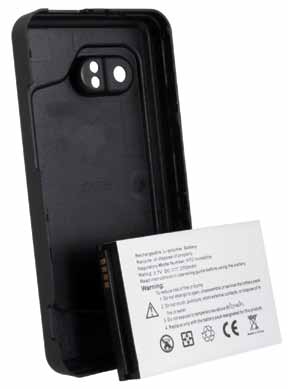
Have you ever been in a situation where you had to make an urgent call and your cellphone ran out of power, or your laptop switched off in the middle of an important client presentation? Clearly, using gadgets on the move is not fashion but a necessity to stay ahead in the competition. The gadgets need a portable power source to work unplugged. This has created a huge platform for R&D in batteries—the portable power storage devices.
When it comes to deciding a battery for your new product, it is very important to look at the battery chemistry. Hiren Shah, assistant general manager, Panasonic Industrial India, shares, “A battery is an electricity generator whose performance depends on its chemical reaction.” The battery has a shelf life and service life, and its performance varies with changes in environmental conditions. Therefore before finalising the battery for your portable application, its complete know-how is extremely important.
Today, about 90 per cent of the consumer products use a Lithium-ion (Li-ion) battery. These hold a market value of $11 billion (as of 2010), which is expected to reach $43 billion by 2020.
Syed Mubasheer Ali, business development manager, D Espat, shares, “Li-ion batteries are common in small applications like micro-robots, mobile phones, field-deployable devices, cameras and medical devices. With the kind of benefits these offer, they have also entered and will soon establish a market for electric and hybrid vehicles.”
Expectations from a battery
Packing more power in a small area is a key requirement in every consumer product today. As laptops, tablets and cellphones shrink in size and weight without compromising on the quality of audio, graphics, etc, you need batteries which are thinner and lighter with higher power densities.
The power and voltage requirements vary from product to product, and commercially available batteries don’t always meet that level of requirement. S.S. Kandhari, CEO, Kandhari Photoelectronics, says, “These needs are served by supplying battery packs ranging from 3.7V to 14.8V. Li-ion battery packs are much lighter and smaller than other battery chemistries, making them highly suitable for LED lighting and UPS backup applications.”
Ali shares, “Starting from voltage and playtime requirements to the preference of dimensions and weight, you need to make mathematical estimates with provisions for the factors of safety and degradation of the chemistry over the expected life of customised battery solutions.”
Today, original equipment manufacturers (OEMs) demand batteries with highly customised footprints and performance characteristics, which is impossible with batteries like nickel-metal hydride (NiMH) and nickel-cadmium (NiCd).
“OEMs demand an X ampere-hour battery to provide peak pulse currents of 18X-30X amperes in order to meet conditional operations of the device, which is definitely impossible with legacy chemistries. Light weight, high energy density, safe materials, fast recharging, high continuous current and peak pulse from small-capacity cells, and consistency in quality are the requirements of OEMs today,” adds Ali.
Li-ion batteries fit the bill
It is the battery and its chemistry that make a product energy-efficient. Li-ion batteries are environment-friendly compared to NiCd and sealed leadacid (SLA) batteries which were commonly used earlier. Basically, these are secondary (rechargeable) batteries that use the electrochemical reaction between a negative lithium anode and a cathode to generate an electric current. Most rechargeable (able to reverse the electrochemical reaction in the opposite direction of discharge) batteries are also easily recyclable.

You might have heard that repeated charging of your cellphone or laptop degrades its performance and life. Well, it was true until Li-ion were used in these devices. The performance and shelf life of batteries degrade due to ‘memory effect.’ When a battery is recharged before it has discharged half the power, it tends to forget its original power capacity. As cadmium crystals are the culprits, NiMH and Li-ion batteries have no memory effect.
Lithium batteries show a high volumetric energy density. Ali recounts, “Polymer lithium (PLI) batteries have 3.7V per cell, which is thrice the voltage of NiCd or NiMH. Further, these are very long-lasting, robust and maintenance-free. They can be built into a rugged assembly battery to suit the requirement.”
“It is because of the Lithium substance that a Li-ion battery has a higher energy density in a smaller size and weight than previous technologies,” explains Shah. They also have lower self-discharge rate—typically, only 5 per cent loss over a month—which means longer shelf life.
Lithium-ion: Indian scenario
There are nearly 10 million mobile devices sold in India, making India the largest consumer of mobile phones. This indirectly makes India a big consumer of Li-ion batteries too.
However, Laxman Soma, CEO, GSK Technologies, informs, “For the Rs 600-million business of mobile phones, every battery used is imported.” There is no Li-ion battery manufacturing being done in India. Soma suggest that if we really want to promote the use of hybrid electric vehicles, it’s necessary to have a Li-ion battery manufacturing set-up in India.
At one of the forums, Sharon Xiao, vice president, BAK, said, “Production of Li-ion batteries is a very difficult and complex process. It needs a very clean environment for manufacturing as any kind of contamination may affect the performance of the battery.”
In the recent past, we have experienced a lot of low-quality or duplicate Li-ion batteries being supplied which greatly harm the electronics. To facilitate the promotion of standards, use of original batteries and positive future outlook, India and China Lithium-ion Technology Forum was formed. The forum will primarily focus on technical specifications for mobile phones and Li-ion batteries.
Comparing situation in India and China, Soma says, “The Chinese government has provided funding and fiscal incentives to Li-ion producers. It has also raised export tax rebates for Li-ion products. There is no funding or incentives available to the producers in India. The Indian government has to understand that there is a need for home-grown products to generate more business avenues.”
As regards the cost, Kandhari cites, “When it comes to battery pack, Li-ion batteries are the most cost-effective. For applications which demand higher voltage and current ratings, many batteries are packed together. For example, if the demand is 6V, you will need five 1.2V NiMH/NiCd batteries. The cost increases with the number of batteries. In the case of Li-ion, you need two 3.7V batteries to give you 7.4V. Thus the cost and size both are affected.” Also, the prices of nickel metal are increasing day-by-day.
Understanding their basics
A lot of people confuse between lithium and Li-ion batteries. These differ in that a lithium battery uses lithium in pure form, which raises its energy density considerably but makes it highly unstable too, while a Li-ion battery uses lithium compounds, which makes it much more stable but pack lesser energy density than lithium batteries.
Ali feels that battery and power management weren’t a concern for embedded engineers when it came to applications based on primary (non-rechargeable) electrical storage. But in devices using secondary (rechargeable) electrical storage, “Multiple user-interface and transactional requirements of the various components and modules, and the overall performance and operational expectations of play-time from a user’s perspective have made it compelling to understand the battery,” he says.
Based on their construction, Li-ion batteries can be classified as cylindrical and prismatic in shape. Further differentiation is in the inner anode and cathode material which could be layered in fla stacks or a long coiled layout. These formats reflectthe selection of the cell type based on the application. The classifiction is also done based on the type of electrolyte used (lithium-iron phosphate, lithium polymer) and the combination of rare elements (magnesium, nickel, cobalt, etc), which can vary in performance and price.
Ali says, “The refined nature of the chemicals used plays an important role.”
Some Li-ion battery vendors
- BAK
- BYD
- Henan Huanyu
- ENIX
- Maxell Panasonic
- Renata
- Sony
- Varta
- Valence
The major disadvantages of Li-ion batteries are combustion due to over-heating and leakage. Also, very deep discharge may result in short-circuit. To avoid such a situation, the Li-ion battery uses a fail-safe circuitry which shuts down the cell outside the safe range of 3-4.2V.
let your battery last longer
The key reason for the fading performance of a battery is the chemistry of the cell. Degradation is bound to happen in any chemical composition but it can certainly be controlled by improving the way the battery is used.
Michael Lin, material scientist, Quallion, shares, “The cell ages faster if you push it to more extreme states. If there is a higher state of charge and higher depth of discharge, which means you are operating your battery over a large voltage range, then the ageing is faster. In the case of high-power input/output, there is larger polarisation and the voltage becomes too high/too low while charging or discharging again, leading to faster ageing. Also, very high temperature leads to faster self-discharge, while very low temperature leads to large polarisation, which again degrades the performance of the cell.”
But ultimately, it depends on the cell chemistry that you use in your battery.
The best way to monitor ageing is to look at the growth of internal resistance. Neal Golovin, battery applications engineer, Delphi Electronics & Safety, shares, “The solid electrolyte interface and interfacial phenomena are the source of increase in resistance. You can monitor the ageing by monitoring the growth of the resistance with cycling. Since most battery pack manufacturers only look at the cell level as opposed to the component level, the resistance is a good enough parameter to follow.”
Li-ion market drivers
Li-ion batteries are predominantly used in mobile phones, laptops, electric tools, cameras and many other handheld devices. But now these have started entering new applications like electric vehicles, plug-in hybrid vehicles, hybrid electric vehicles and electrical storage systems.
Li-ion batteries have a great potential to serve as a great-value alternate energy source, be it for powering the electric or hybrid vehicles or storing the energy recovered from industrial processes. Many electric vehicles and hybrid vehicles plan to use Li-ion. However, it has not entered the mass production because of the high cost-volume ratio.
In India, LED lighting and UPS/inverter back-up applications are driving the growth of Li-ion batteries. Cellphones too are a huge market with constant demand for batteries.
In automotives, large-format cells are preferred to small cells for the smaller footprint and lower component count. But larger cells also have larger heat dissipation. It is important to know how well you can actually assemble and produce the packs with smaller cells. For example, Panasonic is working with Tesla, the maker of high-performance electric vehicles, to develop its next generation of batteries to help Tesla lower the cost and improve the range of its vehicles.
Road ahead: innovations to improve performance
Companies are making huge investments in R&D to improve Li-ion performance in terms of capacity, safety, cycle times and life. Lots of new types of materials are being tested in combination to give better performance.
Toshiba plans to invest 25 billion yens in lithium-titanate batteries. The two major benefits of these batteries over other Li-ion batteries include no thermal runaway and higher cycle counts.
Panasonic has introduced an innovative nickel-oxide-based new platform technology that enables very high capacities to be achieved. In addition, the material and process technology prevent a negative alloy electrode from deforming with repeated charging.
Safety has been a major concern with batteries, especially in increased power state. “Patented heat-resistant layer technology now helps prevent overheating even in the case of an internal short-circuit. The solution consists of an insulated metal-oxide film between the electrodes,” informs Shah.
The author is a senior technology journalist at EFY






